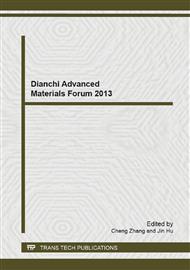p.202
p.208
p.213
p.217
p.221
p.225
p.230
p.237
p.241
Influence of the Binder Amount on the Properties of the Non-Sintering Ti(C,N)-Si3N4-SiC Composite Refractories
Abstract:
The non-sintering Ti (C,N)-Si3N4-SiC composite refractories were prepared using natural quartz, rutile and silicon carbide particles/powders as the raw materials, phenolic resin and urotropin as a complex binder and silicon powder as the additive. The influence of the binder amount on the density, flexural strength, volume shrinkage and the microstructure of the non-sintering Ti (C,N)-Si3N4-SiC composite refractories was studied in detail. The results showed that the amount of binder has significant effects on the properties of the non-sintering Ti (C,N)-Si3N4-SiC composite refractories. The bulk density decreased and the apparent porosity increased as the amount of binder increased, and the flexural strength increased and then decreased as the amount of binder increased, and the volume shrinkage increased with the increase of the amount of binder. The binder is propitious to the properties of the non-sintering Ti (C,N)-Si3N4-SiC composite refractories, but excessive binder will result in the degradation of properties of the as-fabricated composite refractories, the optimum amount of complex adhesive is 15%.
Info:
Periodical:
Pages:
221-224
Citation:
Online since:
November 2013
Authors:
Keywords:
Price:
Сopyright:
© 2014 Trans Tech Publications Ltd. All Rights Reserved
Share:
Citation:


